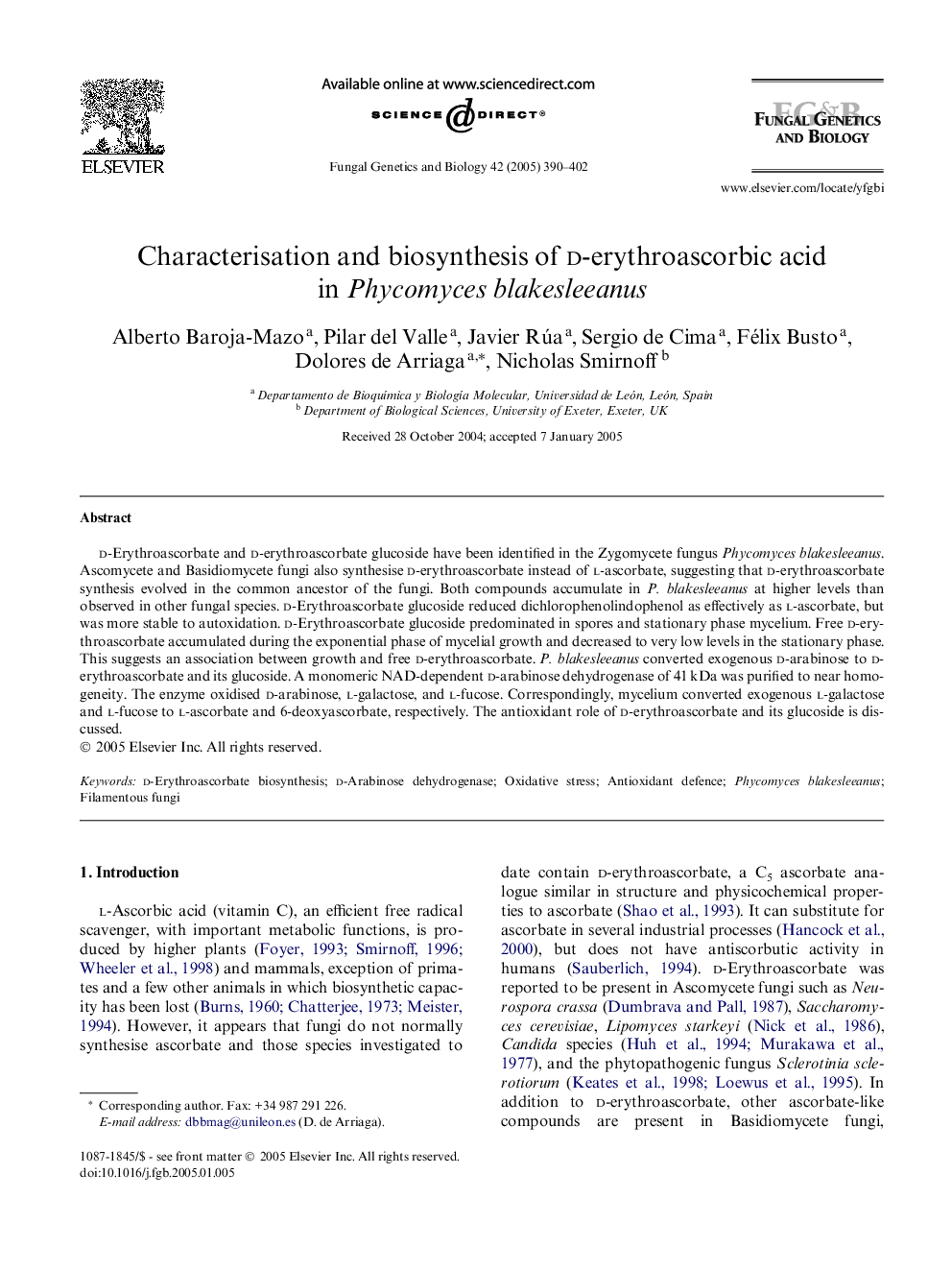| Article ID | Journal | Published Year | Pages | File Type |
|---|---|---|---|---|
| 10939706 | Fungal Genetics and Biology | 2005 | 13 Pages |
Abstract
d-Erythroascorbate and d-erythroascorbate glucoside have been identified in the Zygomycete fungus Phycomyces blakesleeanus. Ascomycete and Basidiomycete fungi also synthesise d-erythroascorbate instead of l-ascorbate, suggesting that d-erythroascorbate synthesis evolved in the common ancestor of the fungi. Both compounds accumulate in P. blakesleeanus at higher levels than observed in other fungal species. d-Erythroascorbate glucoside reduced dichlorophenolindophenol as effectively as l-ascorbate, but was more stable to autoxidation. d-Erythroascorbate glucoside predominated in spores and stationary phase mycelium. Free d-erythroascorbate accumulated during the exponential phase of mycelial growth and decreased to very low levels in the stationary phase. This suggests an association between growth and free d-erythroascorbate. P. blakesleeanus converted exogenous d-arabinose to d-erythroascorbate and its glucoside. A monomeric NAD-dependent d-arabinose dehydrogenase of 41Â kDa was purified to near homogeneity. The enzyme oxidised d-arabinose, l-galactose, and l-fucose. Correspondingly, mycelium converted exogenous l-galactose and l-fucose to l-ascorbate and 6-deoxyascorbate, respectively. The antioxidant role of d-erythroascorbate and its glucoside is discussed.
Keywords
Related Topics
Life Sciences
Biochemistry, Genetics and Molecular Biology
Cell Biology
Authors
Alberto Baroja-Mazo, Pilar del Valle, Javier Rúa, Sergio de Cima, Félix Busto, Dolores de Arriaga, Nicholas Smirnoff,
